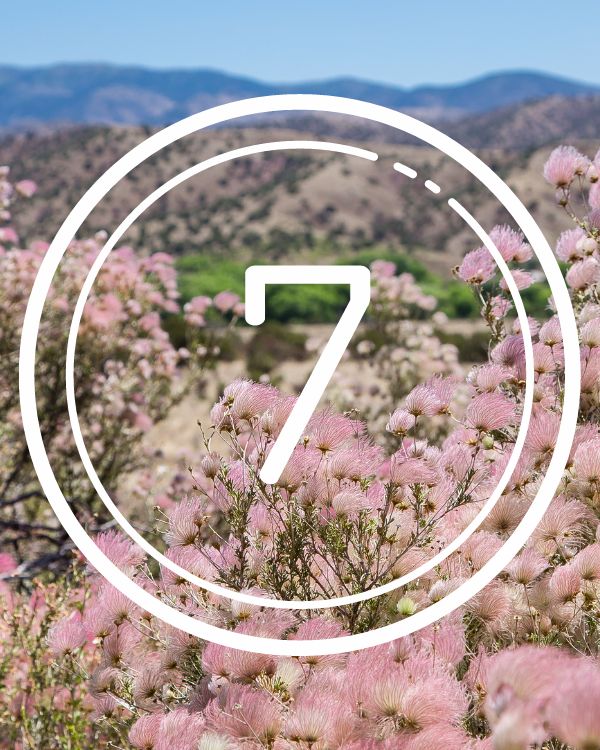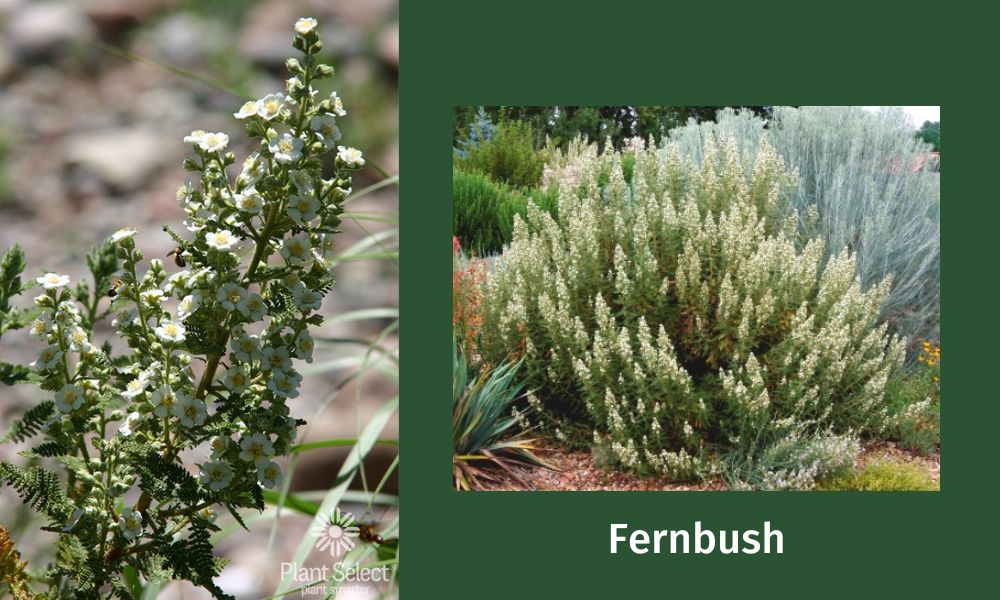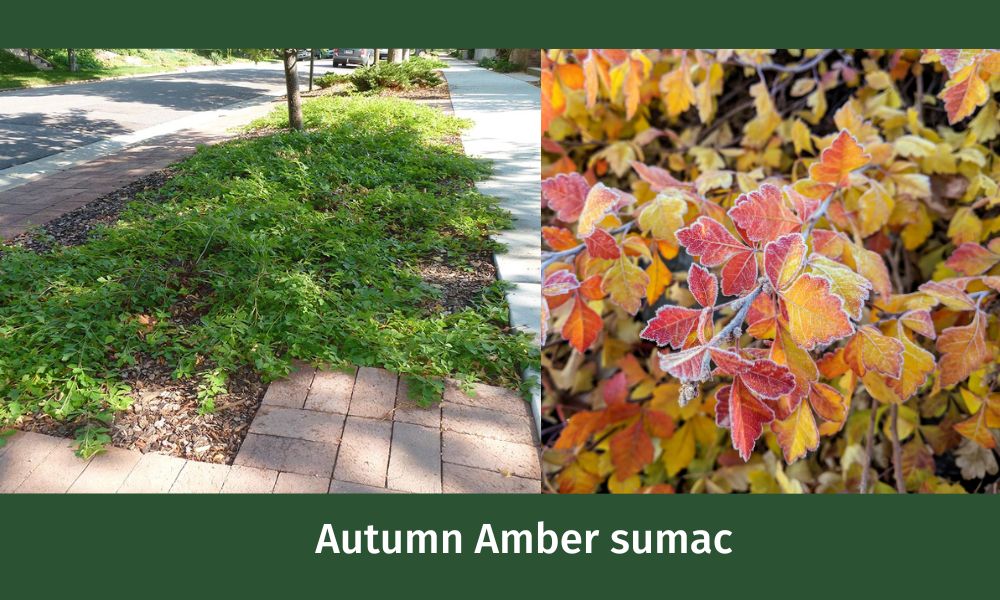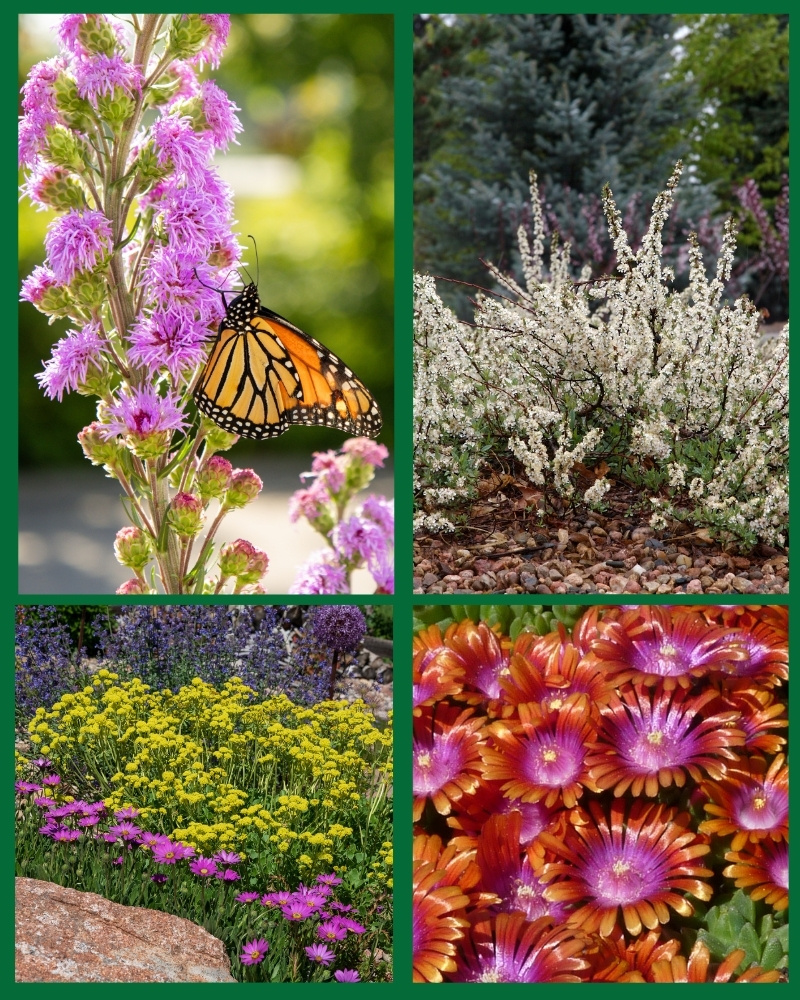Western Dryland Shrubs: 7 Tips to Get More Beauty for Less Work
Recently, we shared many of the perks of planting western native shrubs. In this article, you’ll find 7 tips to help you enjoy their beauty with minimal maintenance.

1. Space your dryland shrubs based on their estimated full size.
Ideally, after a few years, you want the plants to end up touching each other, but not taking each other over. (The latter is what can create extra work and look messy.) This means your shrubs will have space between them for their first few years. If you want your landscape to look fuller, you can always pop in shorter-lived perennials while your shrubs get established.
2. Give your shrubs space around sidewalks.
Don’t plant them right next to sidewalks. Give them room to grow. That way, you don’t have to hard shear the plants along the sidewalk, which can look unnatural.
3. Think ahead to winter.
Dense shrubs—like fernbush (Chamaebatiaria millefolium)—that are planted on the south side of driveways or sidewalks can block the winter sun, creating icy patches behind them. Plant your shrubs far enough away from hardscapes or choose lower growing shrubs to avoid icy spots in the winter.

4. Hold off on using weed barrier with western dryland shrubs.
Weed barrier can create problems for native dryland shrubs. For example, it can hold moisture around the root crown—where the roots and stems attach—leading to rot. (Piling mulch around the crown can do this too.) It can contribute to unhealthy soils, which can affect your plants’ growth. It can inhibit ground-nesting pollinators. And over time, weeds are still likely to grow on top of the fabric.
5. Dryland shrubs can take a couple years to get established.
You aren’t seeing a lot of growth on your new shrubs? This is normal! Ideally, your shrubs are busy establishing their roots before you see significant above-ground growth or a lot of flowers. (It’s worth the wait.)
6. Use your irrigation to manage how big the shrubs grow.
For many western shrubs, the more you irrigate, the bigger or wider they’ll grow. For example, Autumn Amber sumac (Rhus trilobata ‘Autumn Amber’) stays smaller and more contained without any supplemental water. It can grow (and grow and grow) with regular irrigation. Another example: Fernbush stays much more upright and compact without any supplemental water.
Friendly reminder, no matter how waterwise a shrub is, it does need moisture to get established in its first year or two!

7. Keep your shrubs looking natural.
Shearing shrubs into highly manicured round balls is a common landscape practice in some parts of the country, but the beauty of western shrubs is their natural shape. Skip shearing and embrace your shrubs’ informal beauty! Most western dryland shrubs only need undesirable branches cleaned out about once a year. Some shrubs, like fernbush and hardy manzanitas, will tolerate some structural pruning if you want to increase branch density or reduce snow damage.


